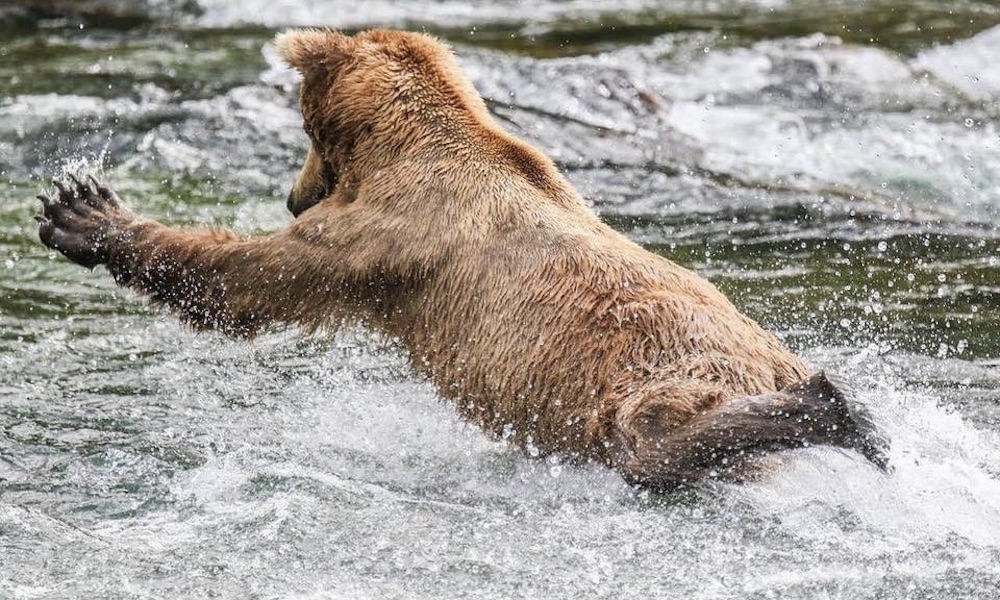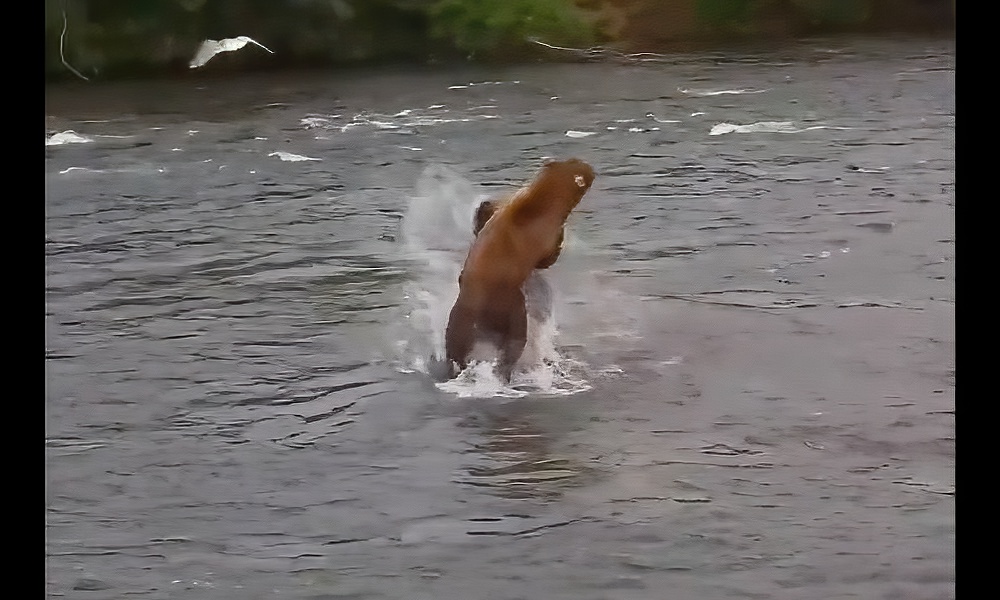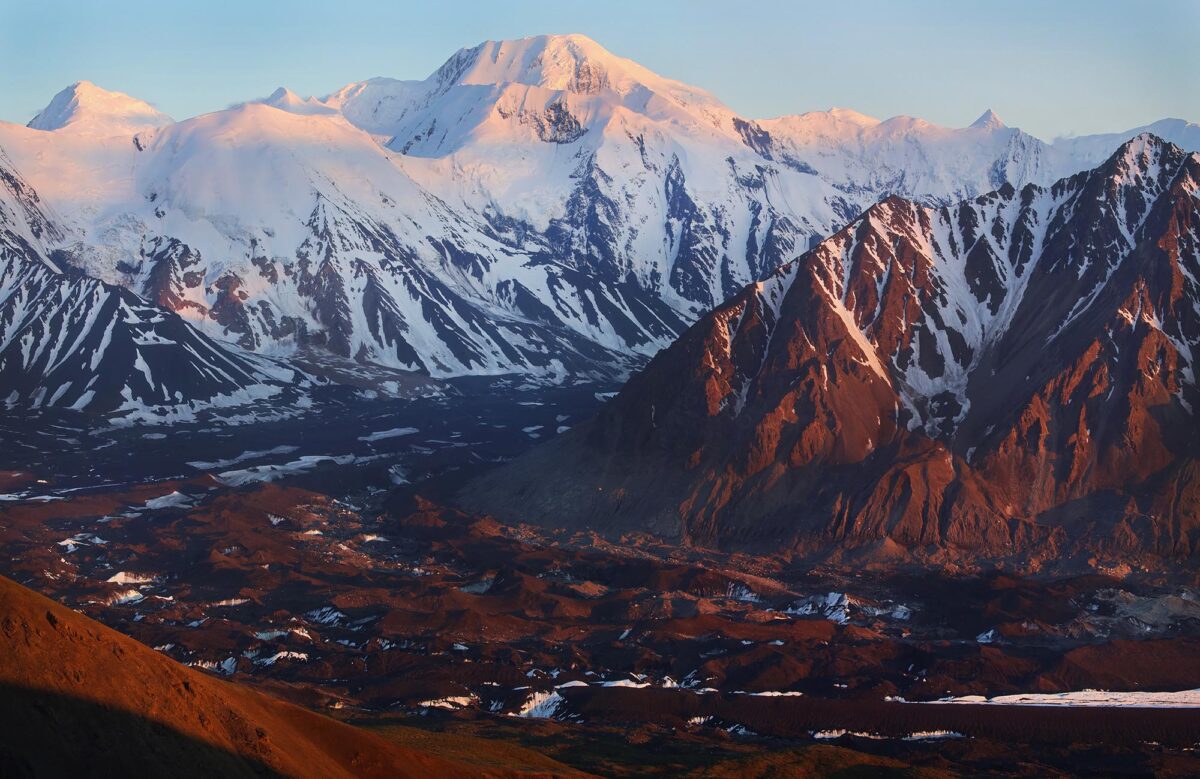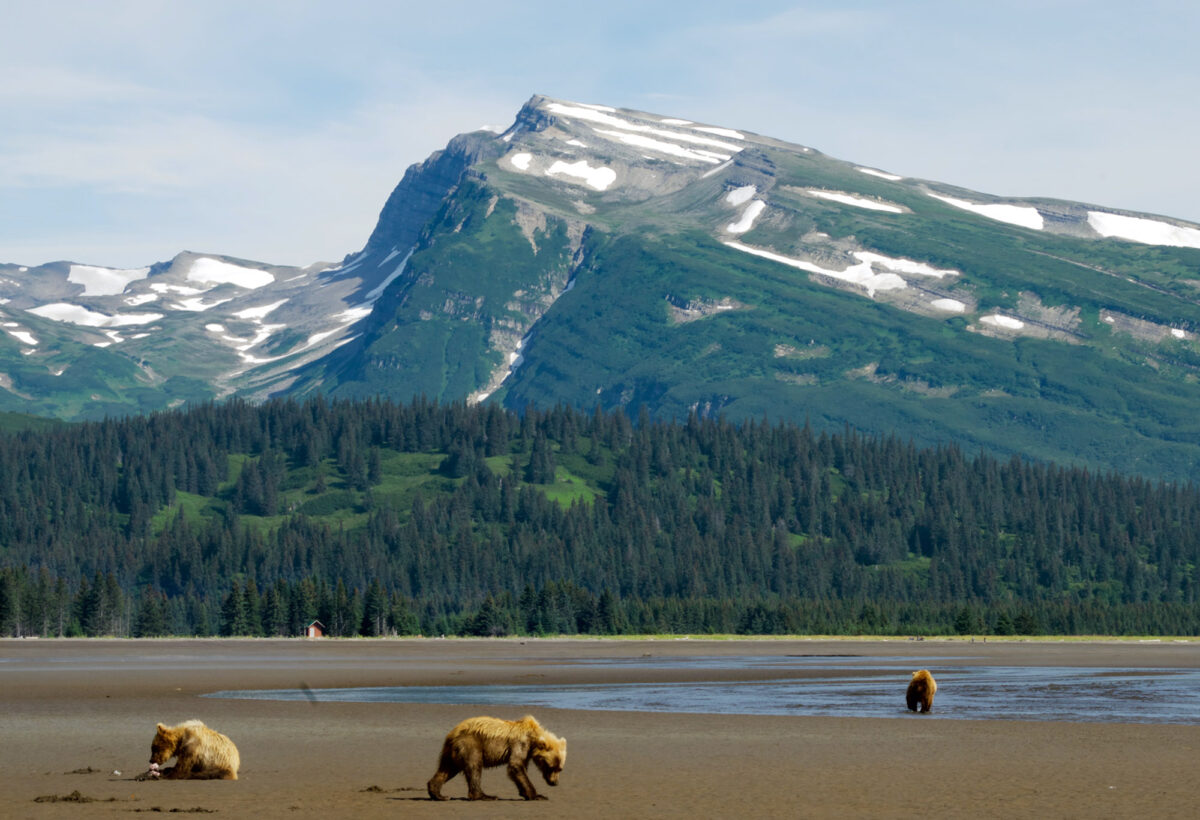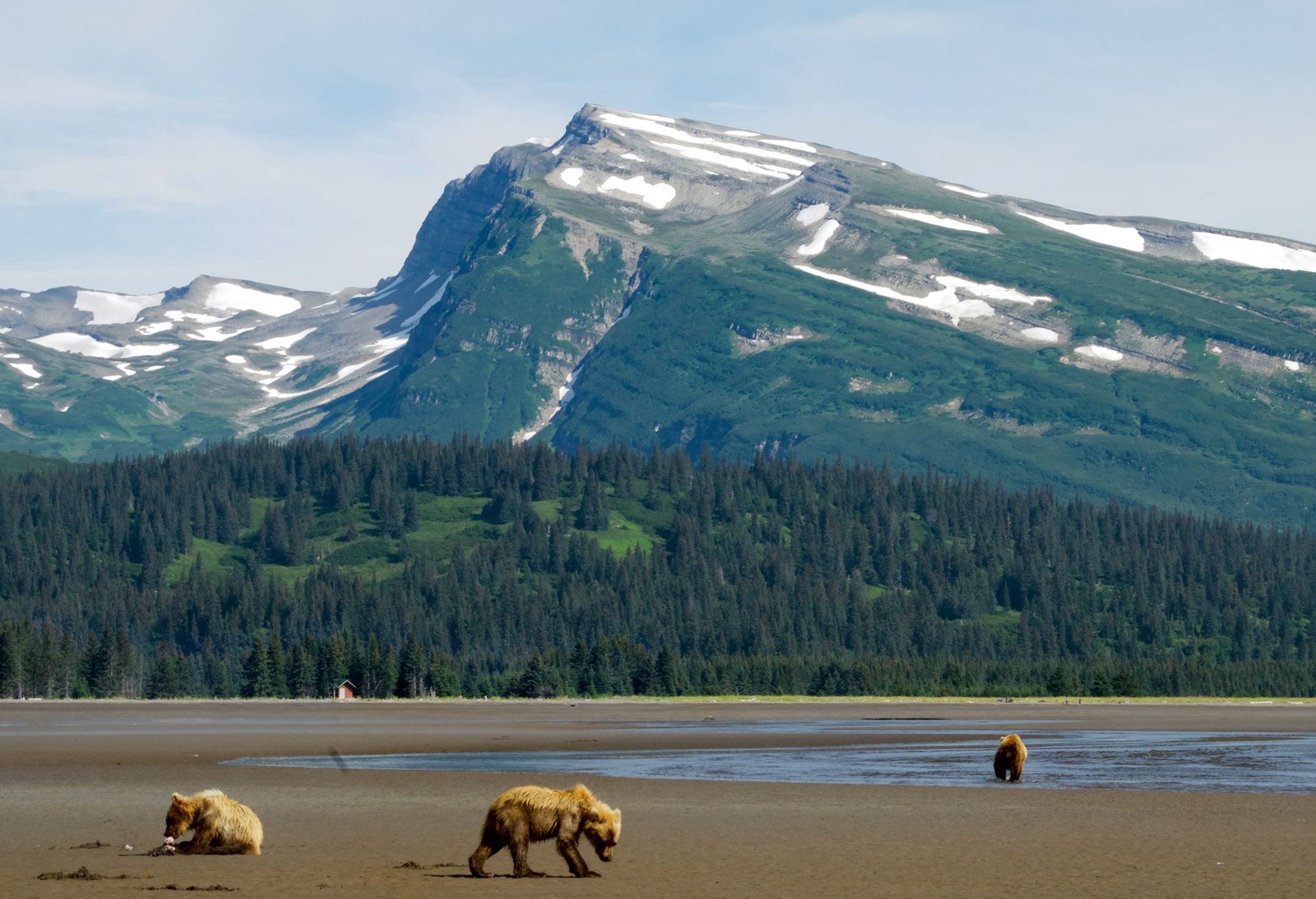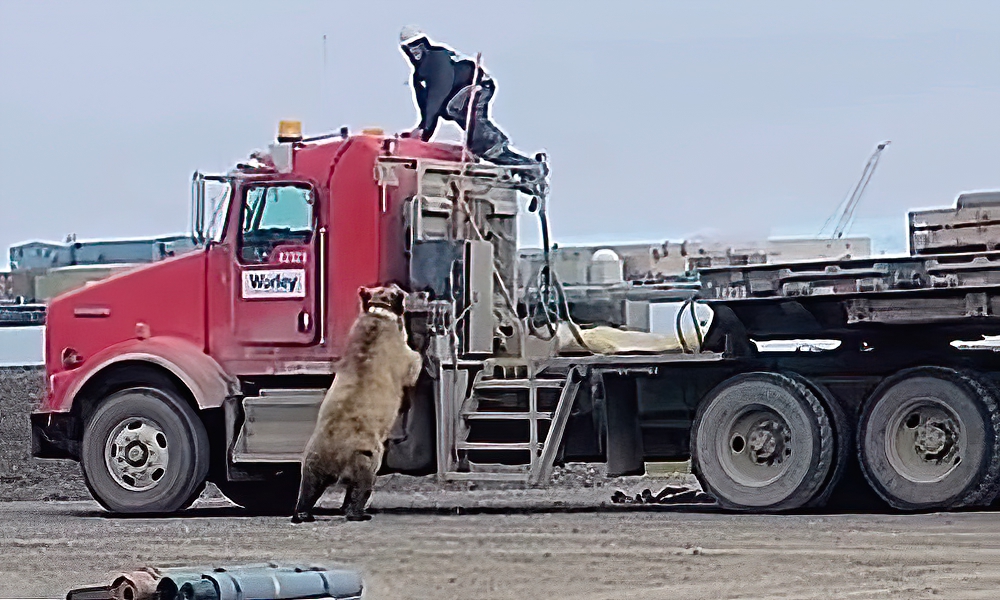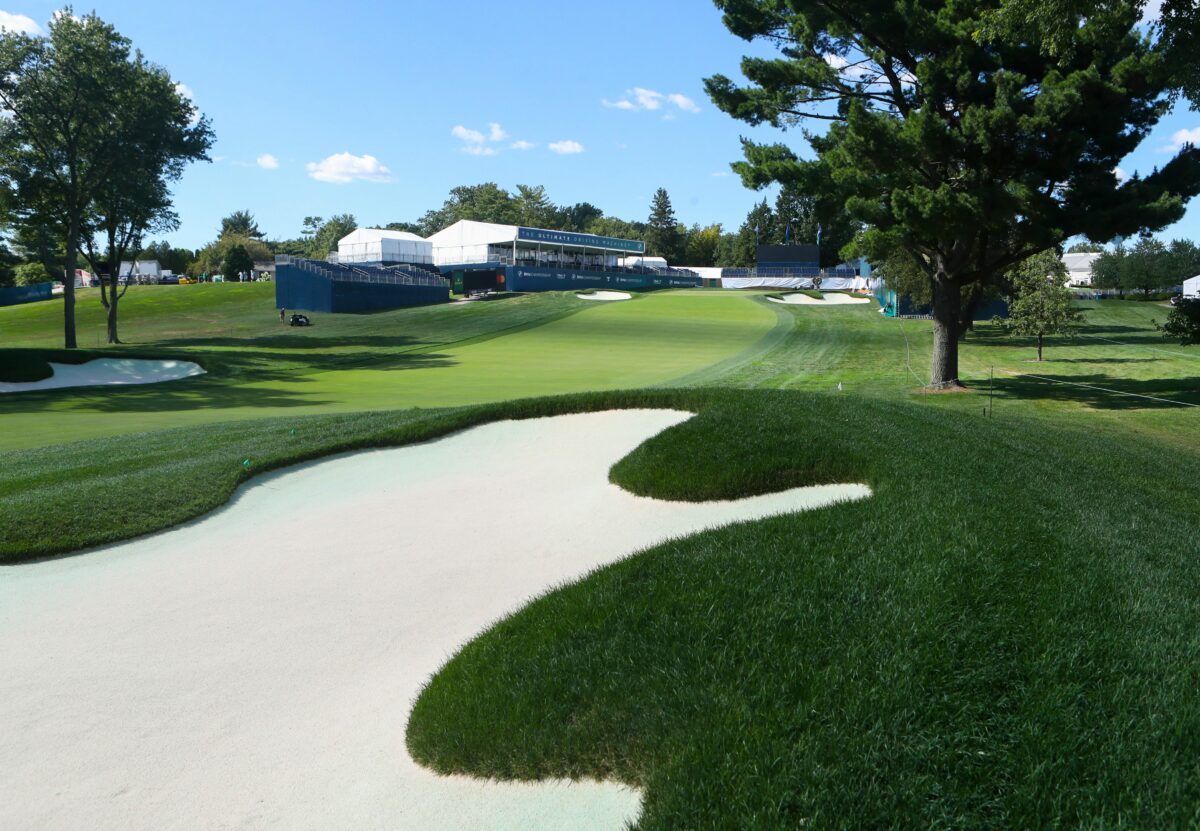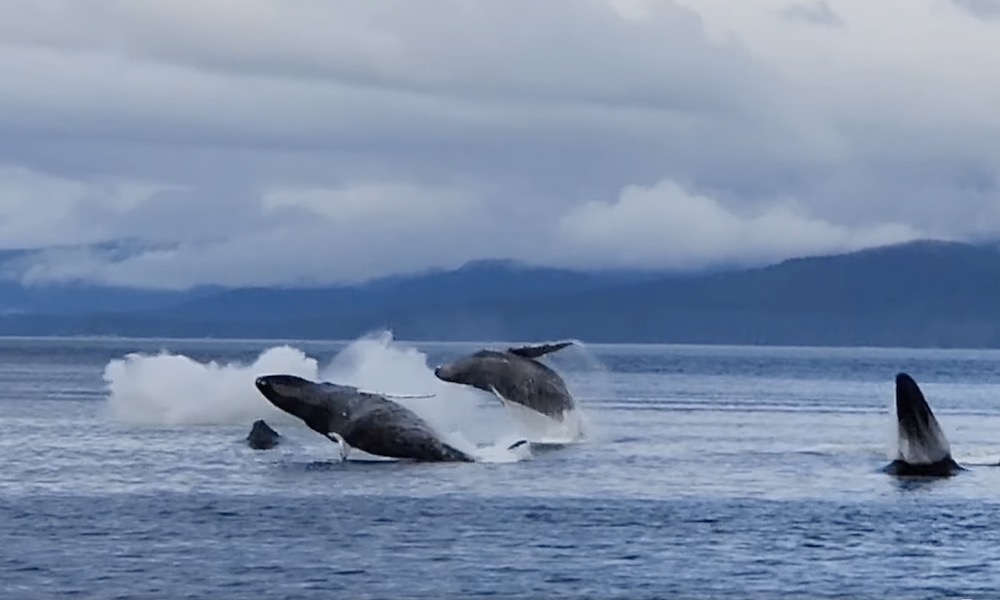An Alaskan brown bear named Grazer was caught on a live-cam feed recently catching a salmon that had attempted to leap over the lip of Brooks Falls.
“The crowd goes wild! Grazer lands the very first Brooks Falls lip catch of the season,” Explore.org stated via Twitter.
To be sure, bears on the Brooks River in Katmai National Park are masters at fishing, and each seems to favor certain areas and techniques.
The crowd goes wild! Grazer lands the very first Brooks Falls lip catch of the season. pic.twitter.com/74rcfgpJNP
— explore.org (@exploreorg) July 13, 2023
With the season getting underway – fans can watch the bears on Explore’s live feeds – the National Park Service has described the techniques via Facebook under the heading:
“How do you catch a fish without a fishing pole? With your bear hands.”
Viewers can click on the post or view the humorous explanations below:
–The Stand and Wait: Bears stand on top the falls and wait for salmon to jump close enough to catch. Bears sometimes slip on the falls (usually when someone is looking) so they rarely shift position. Sometimes they misjudge and the fish hits the bear in the face. (Insert own metaphor for life).
–The Sit and Wait: Similar to the first one but sitting. Bears sit underneath Brooks Falls in the plunge pool or “jacuzzi,” and wait for salmon to swim to them.”
RELATED: ‘Dominant’ brown bears brawl over fishing rights at Brooks Falls
–The Dash and Grab: Bears chase the fish and attempt to pin them to the river bottom with their paws. Fast-food on the go!
–The Snorkeler: Bears look for fish under the water while seeing who can make the most bubbles.
–The Diver: Some bears avoid getting their ears wet, so diving is not for every bear. However there are some that will submerge themselves completely underwater to obtain food resources. You do what you got to do.
–The Pirate: Arrgggg! It’s Cap’n Bruin Brownbeard the Hungry! Pirating bears plunder already caught fish from other bears. Keep an eye on the horizon. Avast ye scurvy bear! I’ve come for the fishes!
–The Sharer: Bears do not usually share food with others (bearing is NOT sharing), but some will share the spoils. (Not the Cap’n) This interaction occurs between bears that are highly tolerant of each other. BFFs (bear fish friends!)
– The Belly Flop: A big splash requires big bear air, as the bear springs up out of the water or launches off the side to take a fish by surprise. This can be extremely successful or, well, a flop.”
The top image, highlighting the belly flop, was captured by M. Bradburn for the National Park Service.
